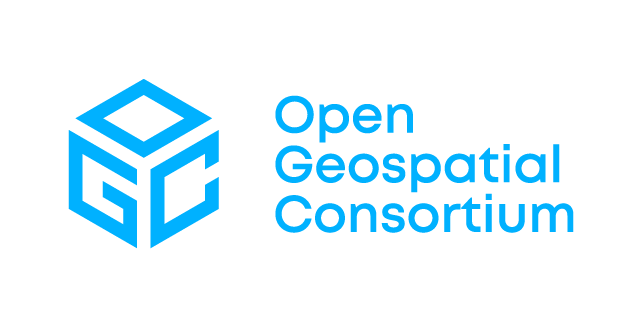Identifying the feasible areas for placing and restoring the wetlands and riparian buffer strips to the landscape for reducing agricultural pollution and increasing carbon storage
The growing human population needs to increase food production without more negative impact on the environment. This situation has created the need for “sustainable intensification”: increasing agricultural yields while simultaneously decreasing environmental impacts. Nature-based solutions (NbS) such as riparian buffer strips and wetlands have been proven to be an effective measure at retaining sediments and nutrients leached from upslope agricultural areas, and in increasing carbon storage. However, in agricultural regions, riparian buffer zones and wetlands have been rather reduced in extent or removed entirely to maximize the area of arable cropland. To restore or create wetlands and riparian buffer strips is costly and therefore the potential restoration/creation sites must be selected carefully by considering site-specific conditions. Traditionally, such large-scale planning efforts are accompanied by extensive fieldwork, which reduces its applicability on larger scales.
The aim of this PhD project is to identify the feasible and potentially most effective areas for wetlands and riparian buffer strips to reduce the nutrient runoff and increase carbon storage at regional (European) and national (Estonian) scales using remotely sensed data and novel spatial analysis methods. The project will use freely available, mostly remote sensing based data via Google Earth Engine, and combine suitability modelling with machine learning to identify areas where wetlands and riparian buffer zones could potentially be implemented and/or restored in order to be most efficient in terms of nutrient removal and carbon storage. The developed suitability maps offer a robust and rapid method to determine suitable locations for wetland creation or restoration and riparian buffer strip creation without requiring the use of additional data sources, such as field soil survey data. InVEST (Integrated Valuation of Ecosystem Services and Tradeoffs) model will be used to analyse the potential NbS placement scenarios in terms of nutrient retention and carbon sequestration effectiveness.
The research is part of the “Creating Water-Smart Landscapes” project and its results and developed methodologies will potentially inform several applied science projects. The PhD student will be working in the Landscape Geoinformatics Lab in the Department of Geography, University of Tartu.
Core tasks include:
- collating spatial data from remote sensing and existing global, European or local databases needed to build criteria for the suitability modelling
- developing interpretable machine learning model to identify the relevant criteria for wetland and riparian buffer strip placement in addition to the literature review
- perform suitability modelling with input from ML and literature review
- use the InVEST model for evaluating different NbS land use allocation scenarios in terms of water quality and carbon storage
Requirements:
Master’s degree in geography, geoinformatics, remote sensing or wider spatial and natural sciences. The ideal candidate has proven experience in following essential skills:
- optical remote sensing and image classification, preferably with Google Earth Engine
- spatial analysis and GIS, comfortable with QGIS or ArcGIS
- scripting of workflows and data analysis with Python or R
- understanding of landscape processes (physical geography)
- confident in English language spoken and written. See more info about language requirements https://ut.ee/en/sisu/phd-language-requirements English language test must be submitted by 15th of May
- good communication skills and willingness to work in a team
In addition, following skills would be beneficial:
- understanding of and experience in using machine learning methods (such as Random Forest)
Funding and Health Insurance
The position is fully funded. As a full-time PhD student you will be employed on a junior researcher position with gross salary of 1720 EUR (net approx. 1400 EUR). Living costs in Estonia are very reasonable and the allowance can cover your living costs. All PhD students are provided with Estonian national health insurance. Health insurance coverage is available for the full nominal study period of PhD studies (4 years). The university is also covering regular health checks and some health improvement costs (e.g. gym, swimming) for the staff members.
Living in Estonia In Estonia you will be living in a highly connected society, with free Wi-Fi almost everywhere. Many everyday activities are made easier with various IT solutions: register a company with as little as 18 minutes, park your car with phone, register courses online etc. Entrepreneurship and innovative solutions are highly welcomed in Estonia, which has a strong start-up community and has also become known as the Silicon Valley of Europe. Student life in Estonia is full of activities and events. There are many organizations and events that help foreign students to settle into Estonian life and create a social network in the country. For more information about Living in Estonia https://studyinestonia.ee/living Start of the studies: 4th of September 2023
To Apply
Please submit the following materials via email to evelyn.uuemaa@ut.ee by 20th of March 2023 :
- A one-page letter of motivation explaining how your prior research experience qualifies you for the position and why you would like to work on this topic.
- Copies of both bachelor’s and master’s diplomas, and diploma supplement (bachelor’s and master’s transcript/mark sheet, including the description of the grading scale). Applicants graduating in 2022 and having their diplomas issued later than the application deadline, should electronically submit their most recent official Transcript of Records by the required deadline along with the rest of the required documents. Please note that you must have graduated from your master´s studies by 1 August, 2023.
- A two page CV (including publications if available).
- Names and contact details for one reference.
Applicants selected for an interview will be contacted before the end of March 2023. Priority will be given to candidates with experience in the processing of satellite images (with GEE), spatial data analysis, programming knowledge, especially in Python, and understanding in physical geography. For shortlisted candidates we will also aim to assess technical and spoken communication skills in an online interview.





